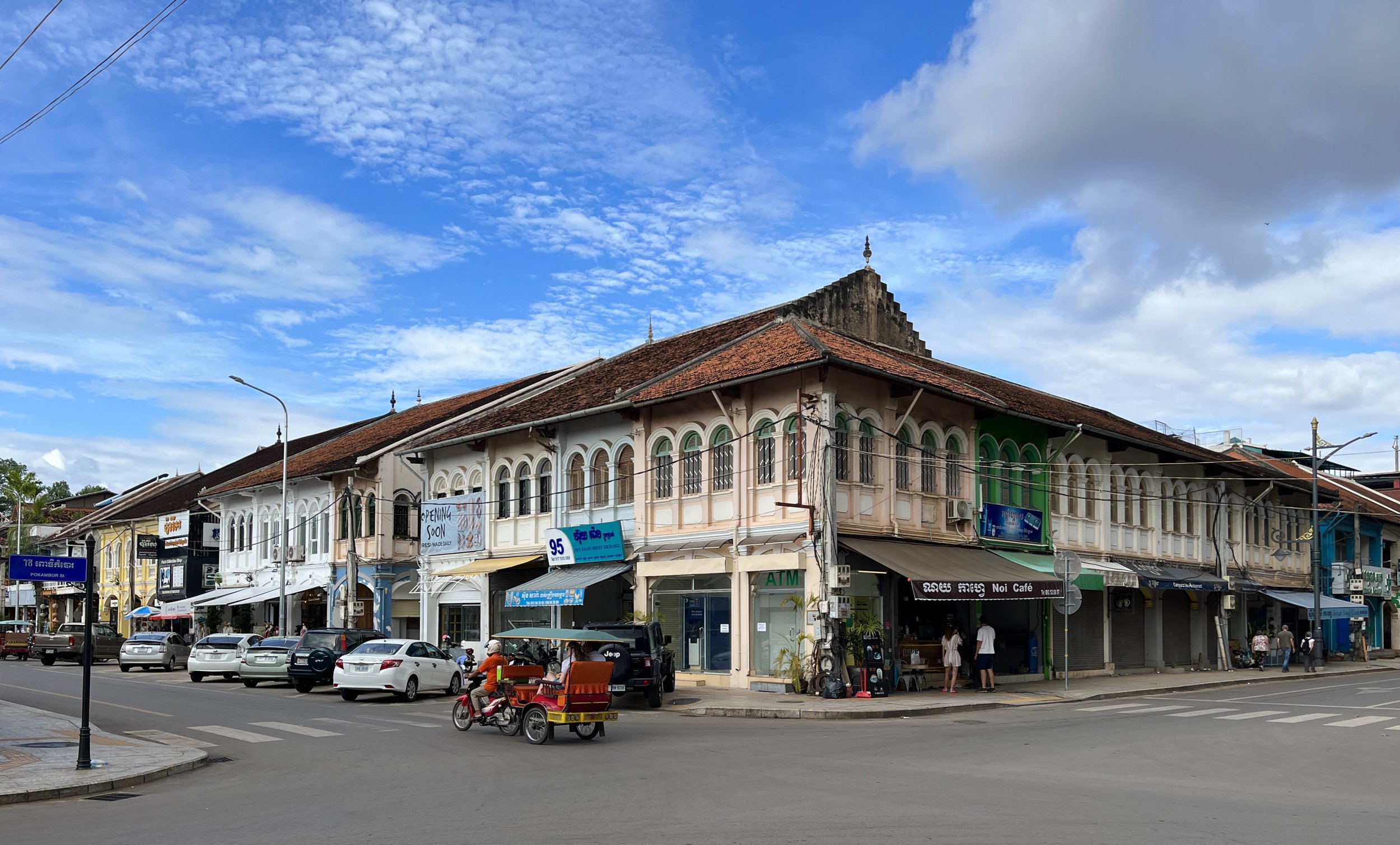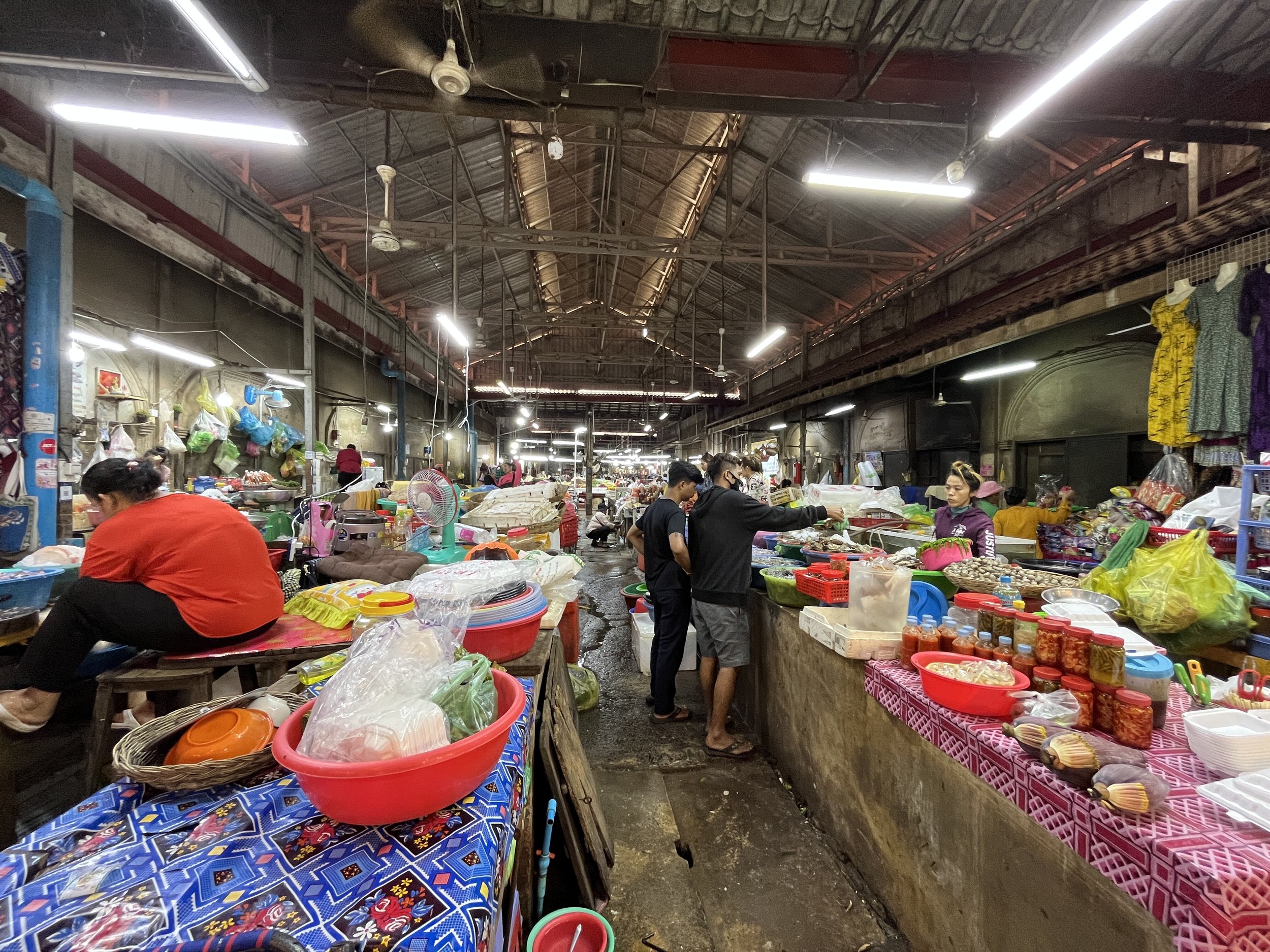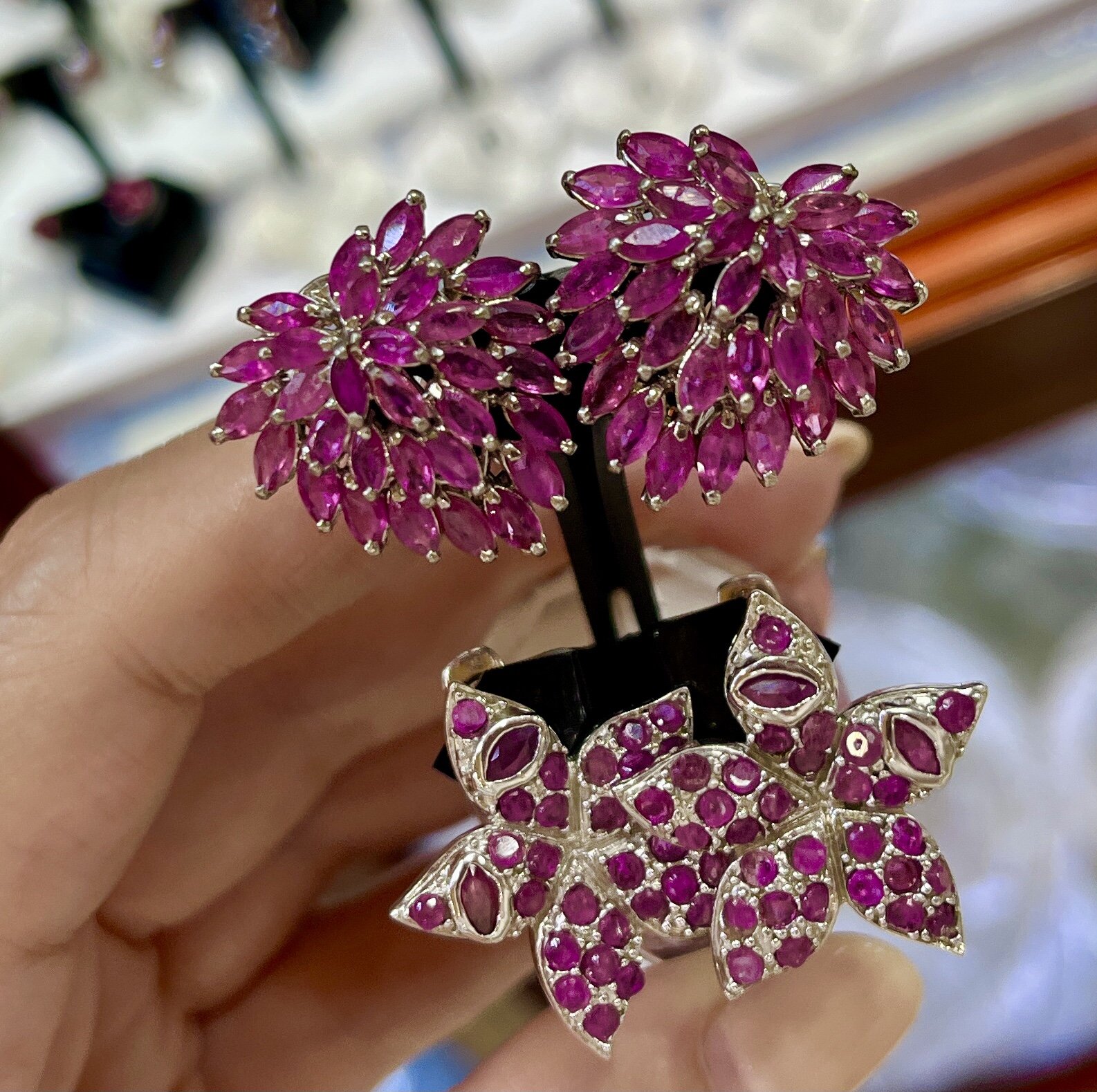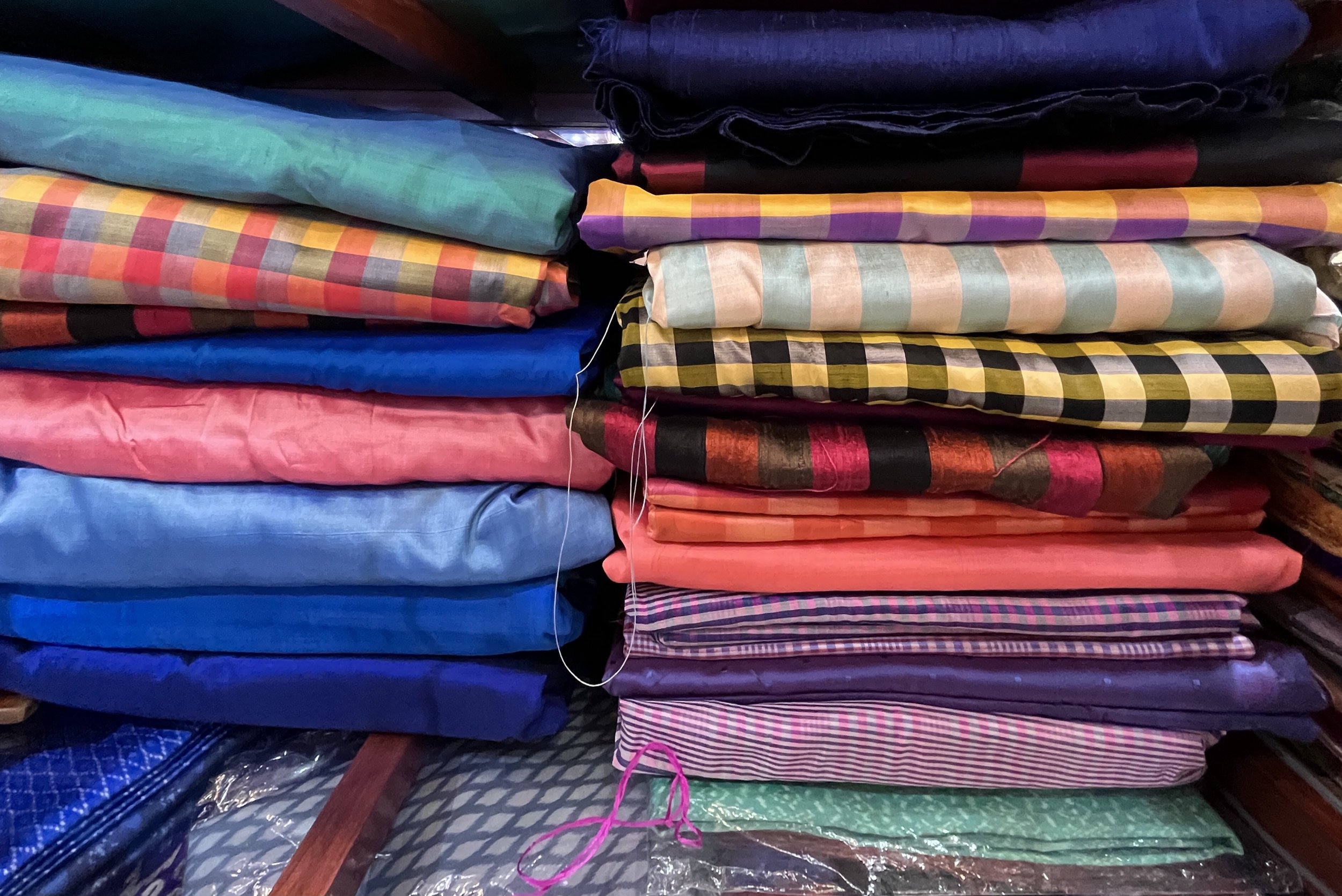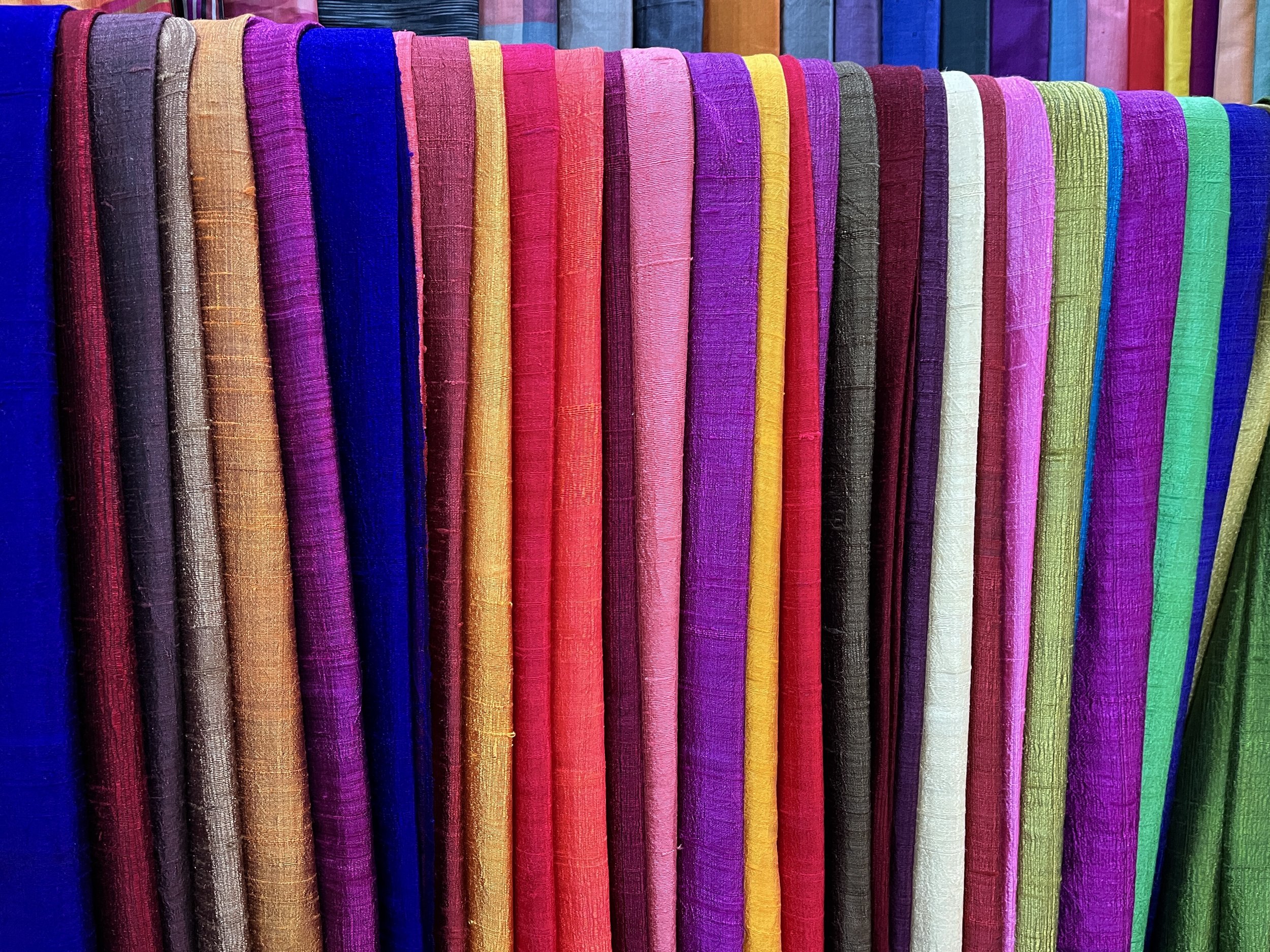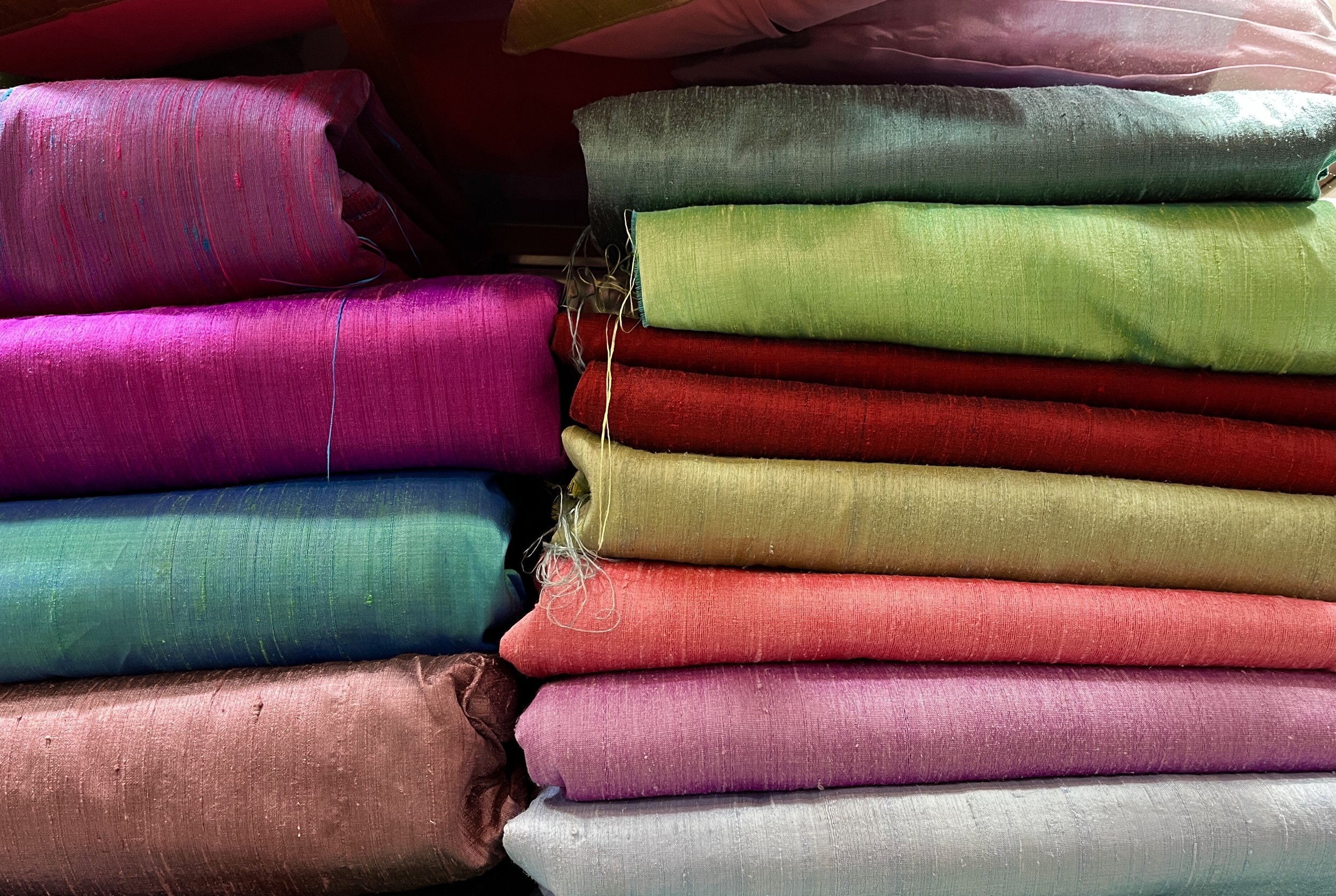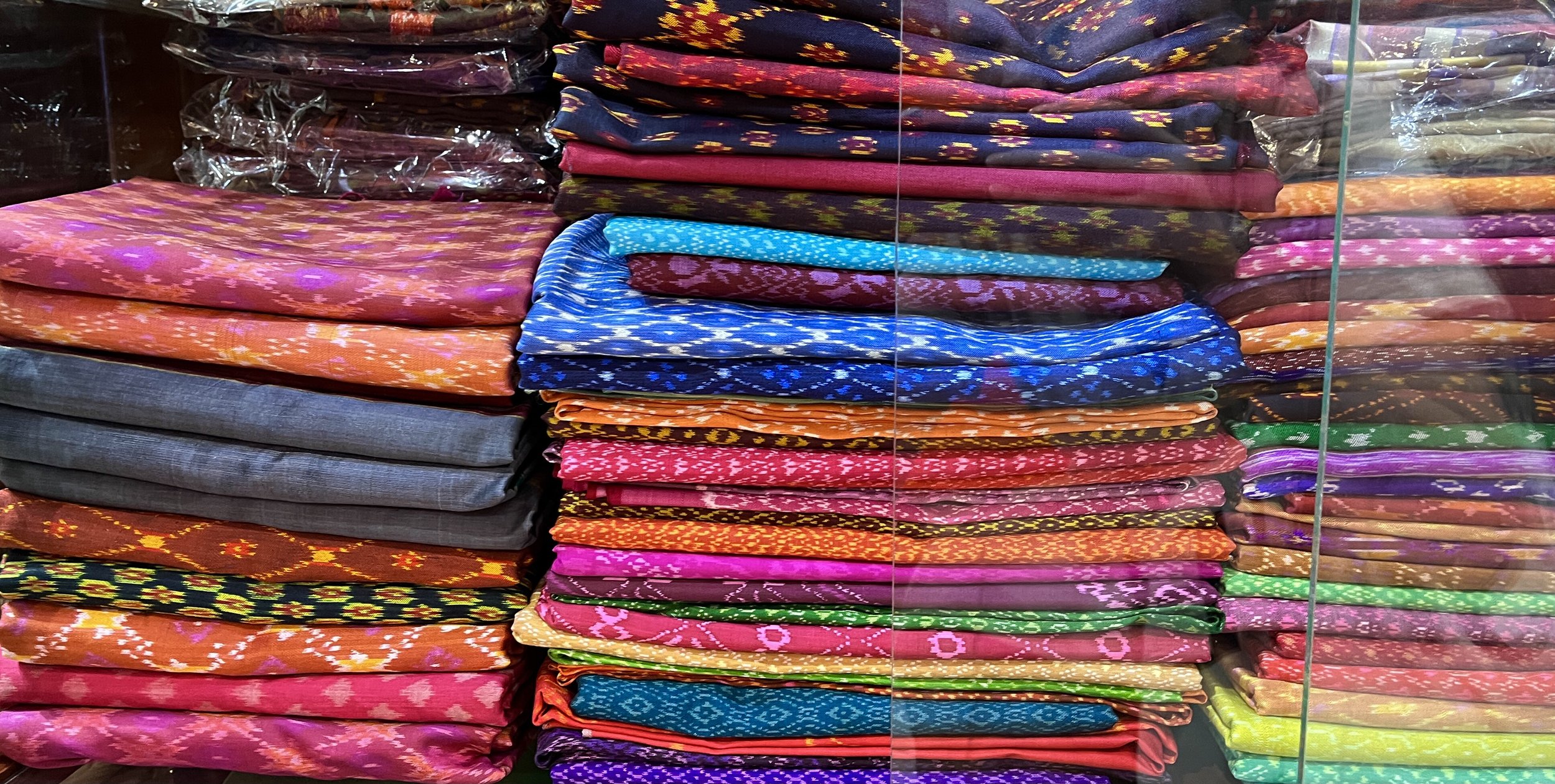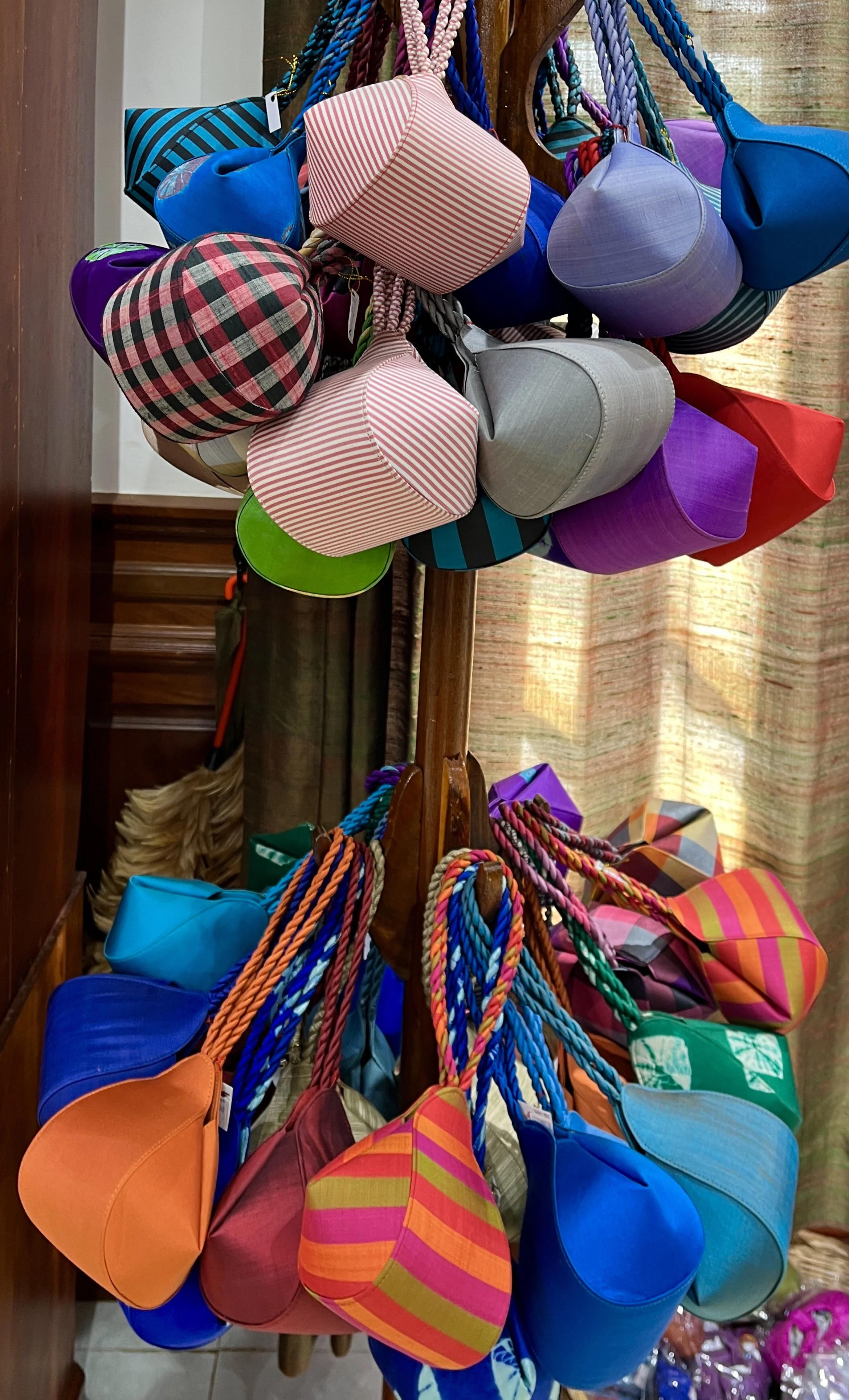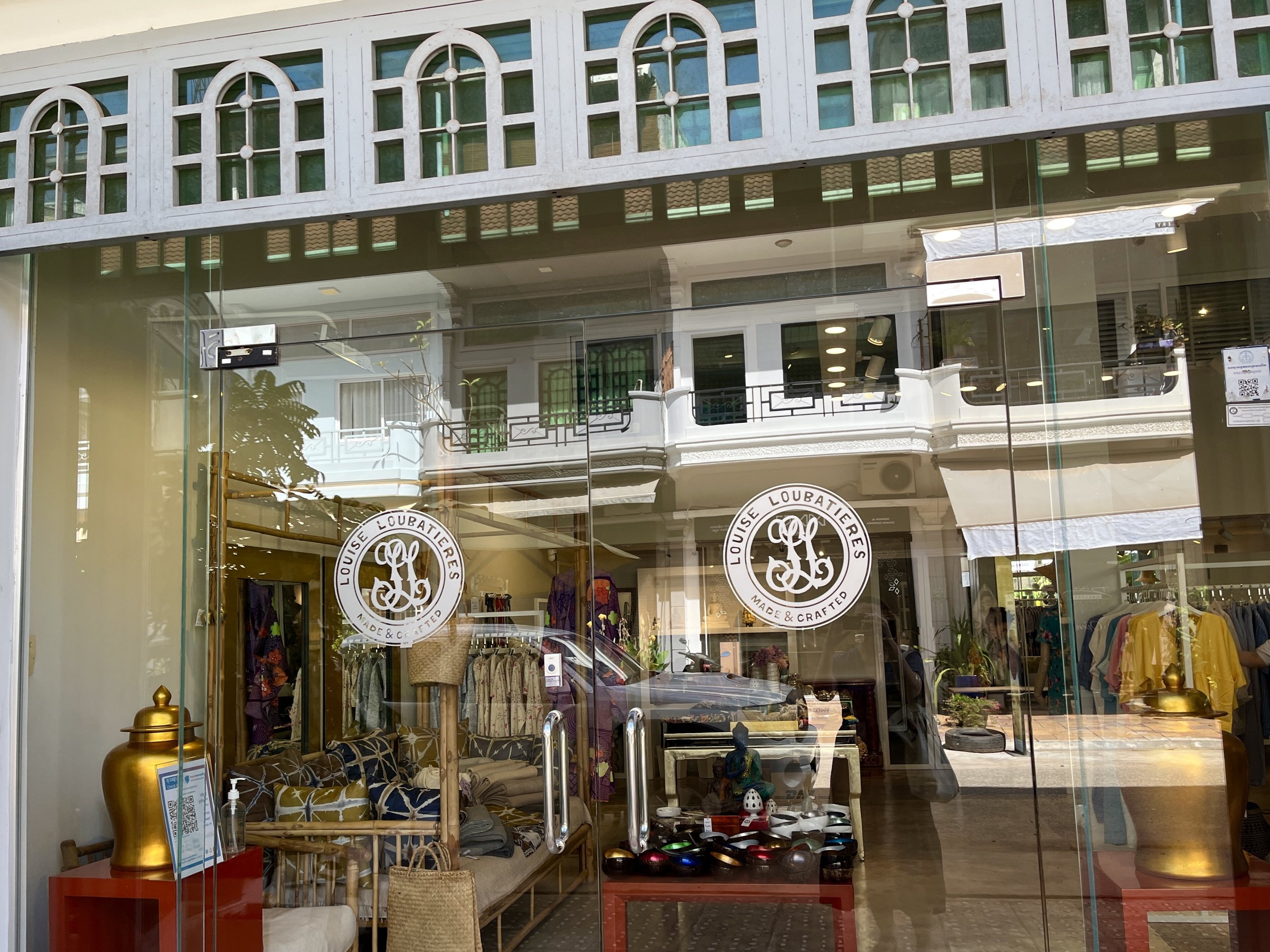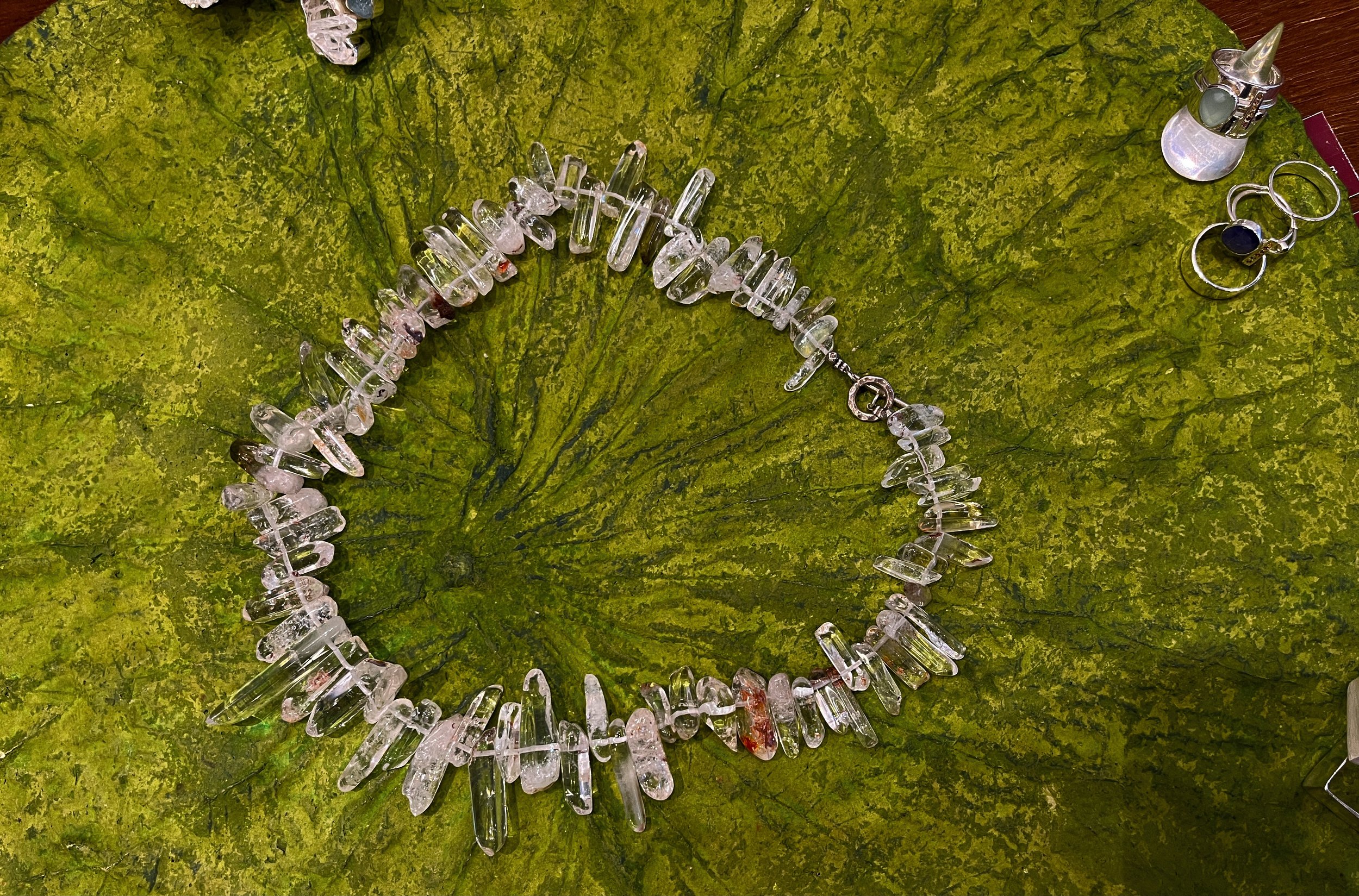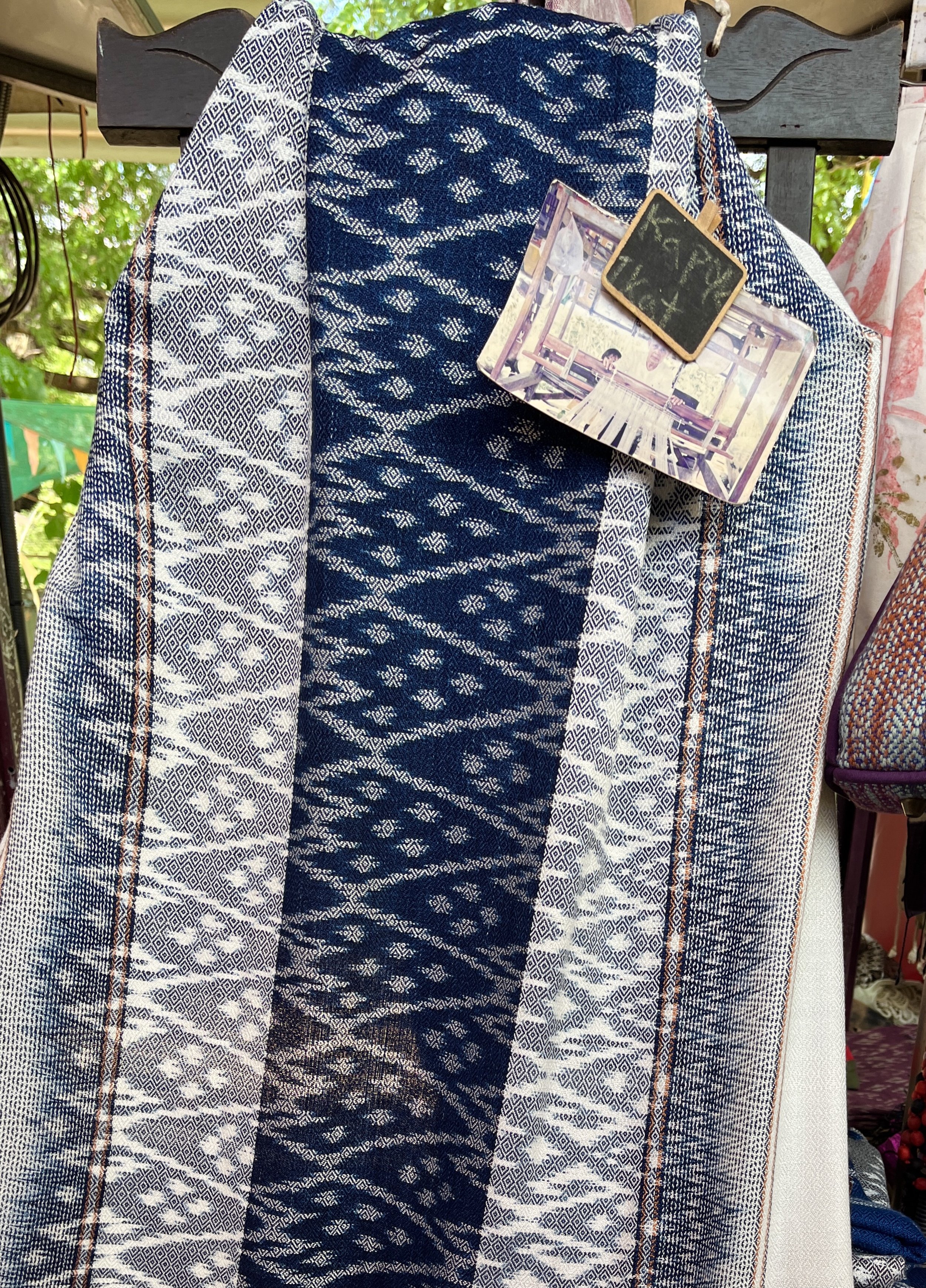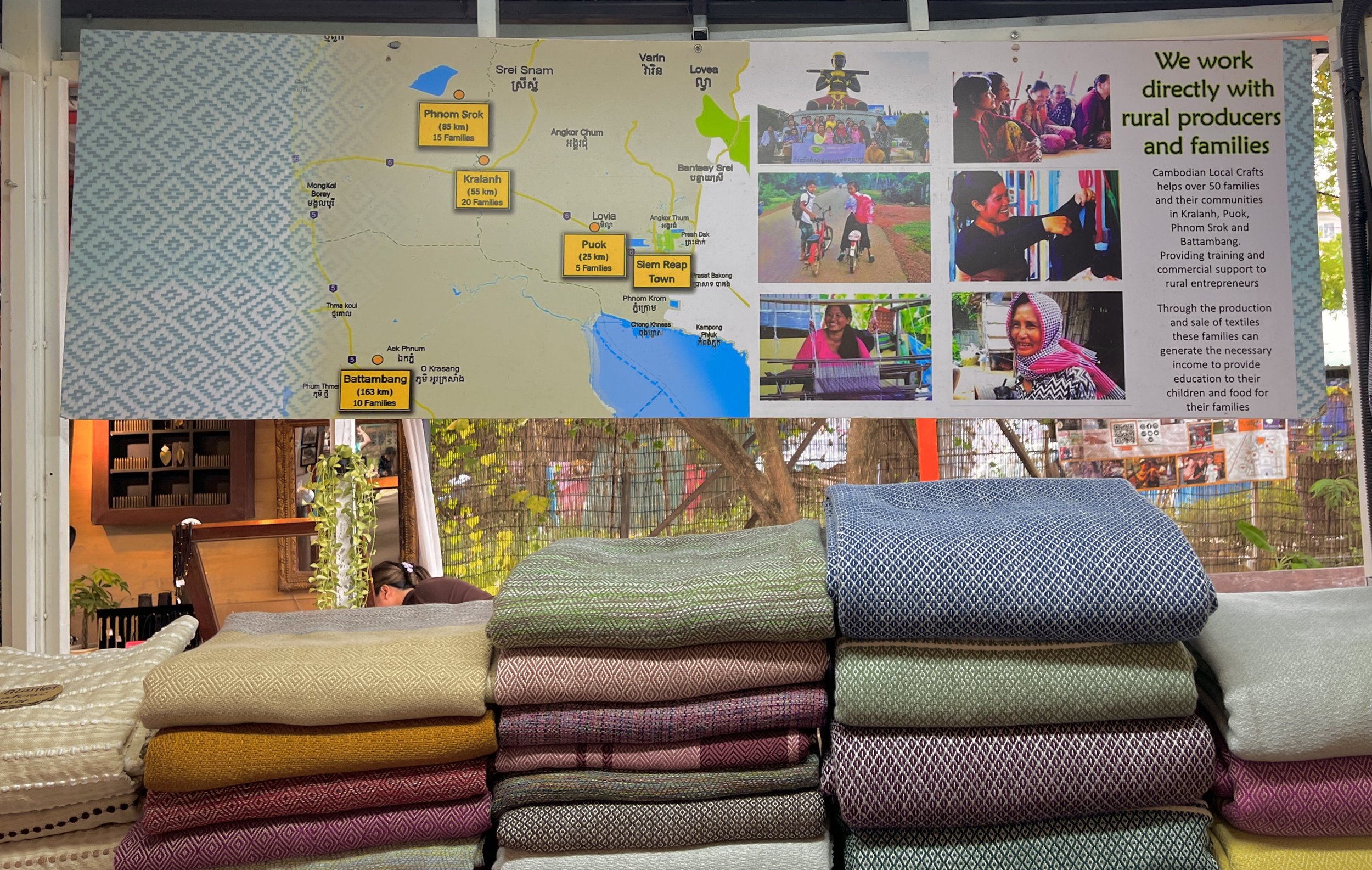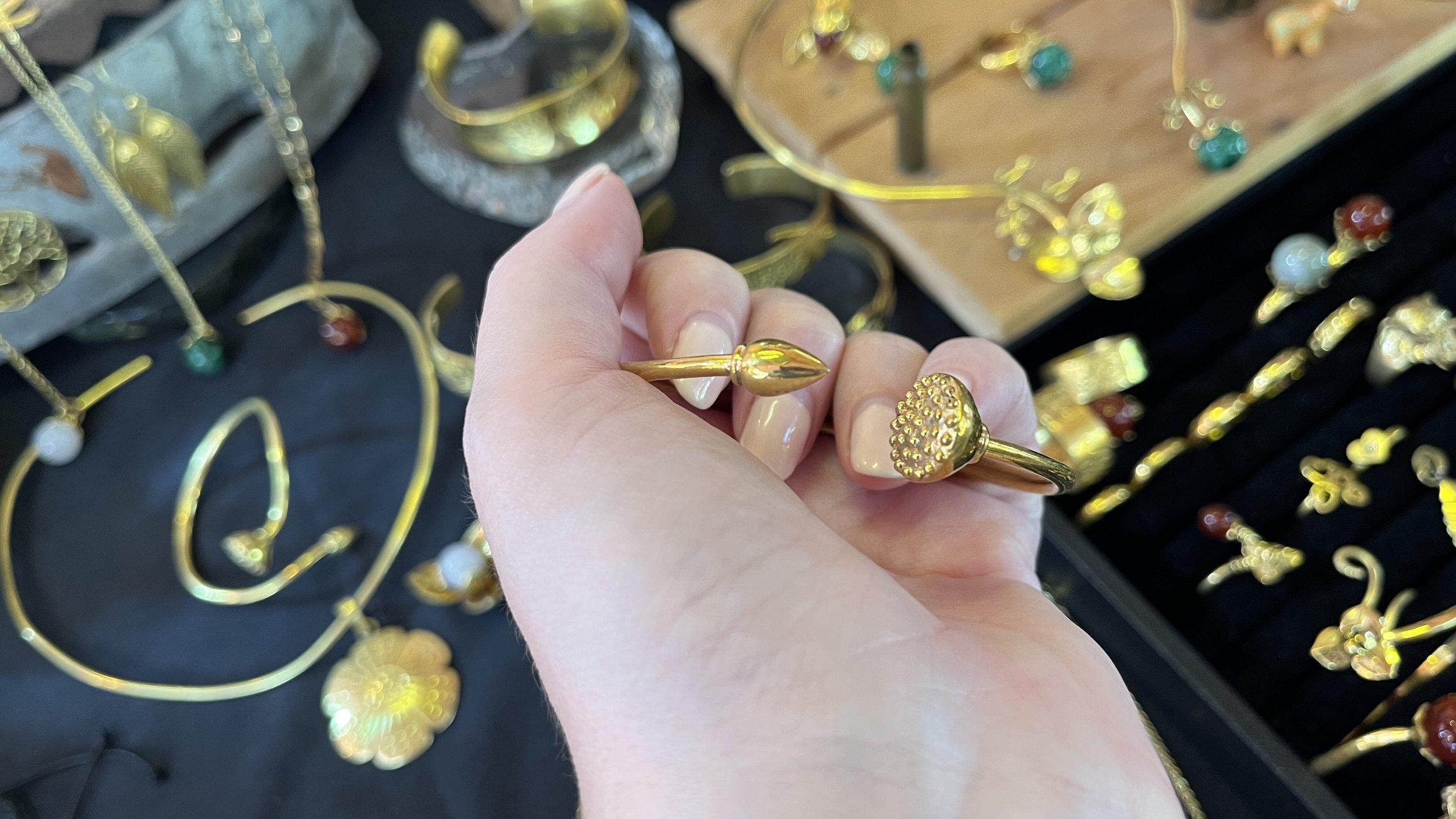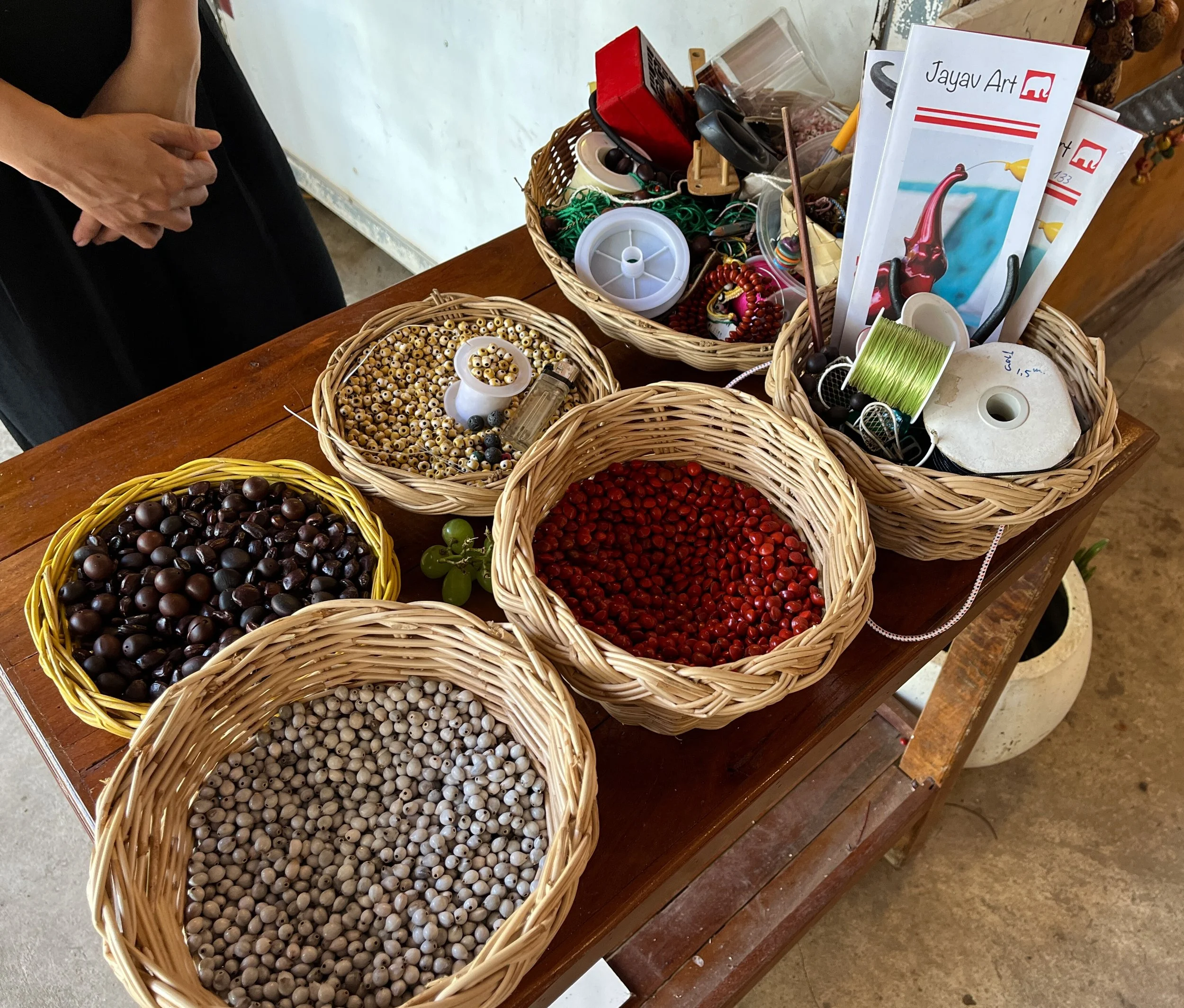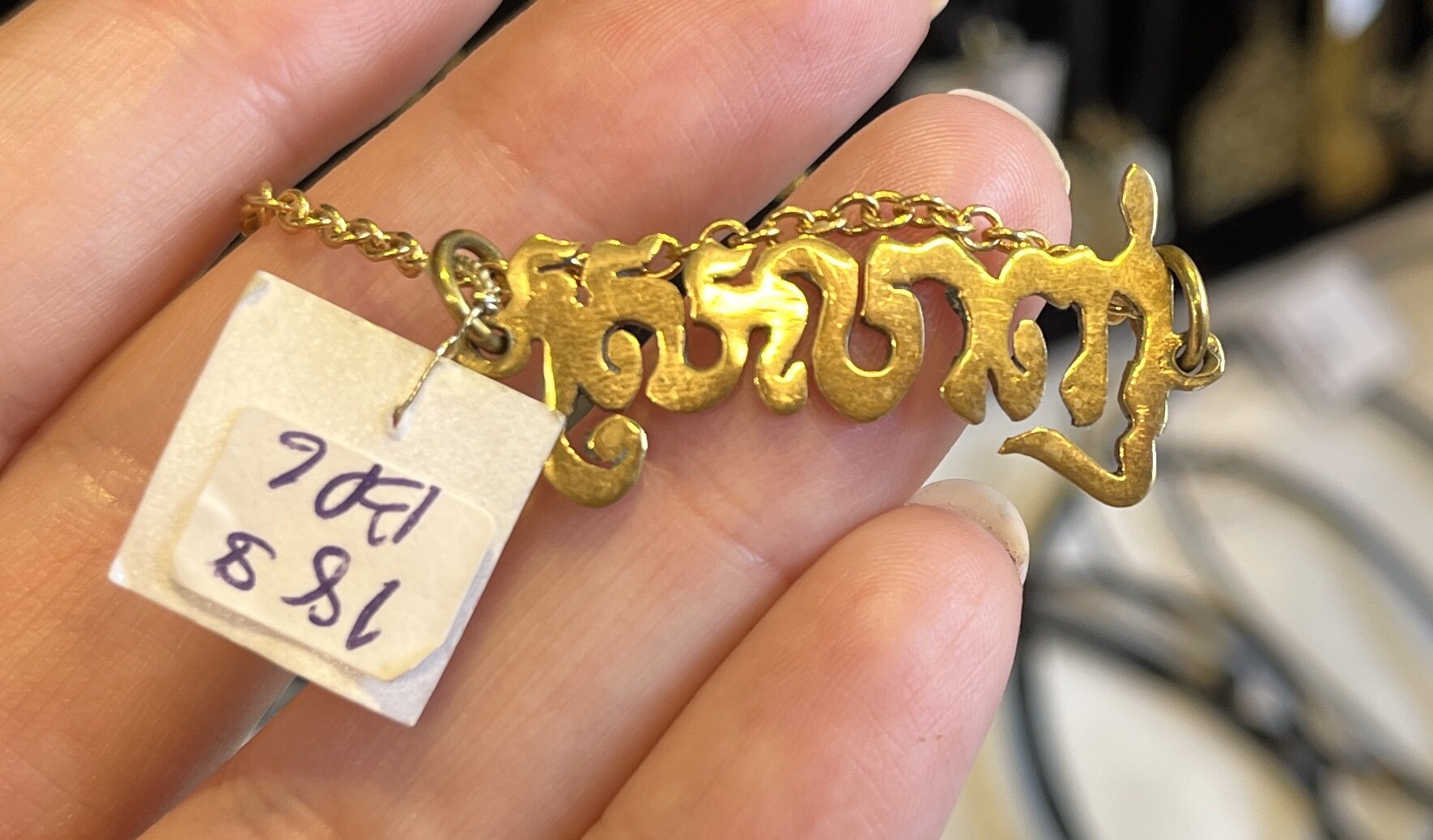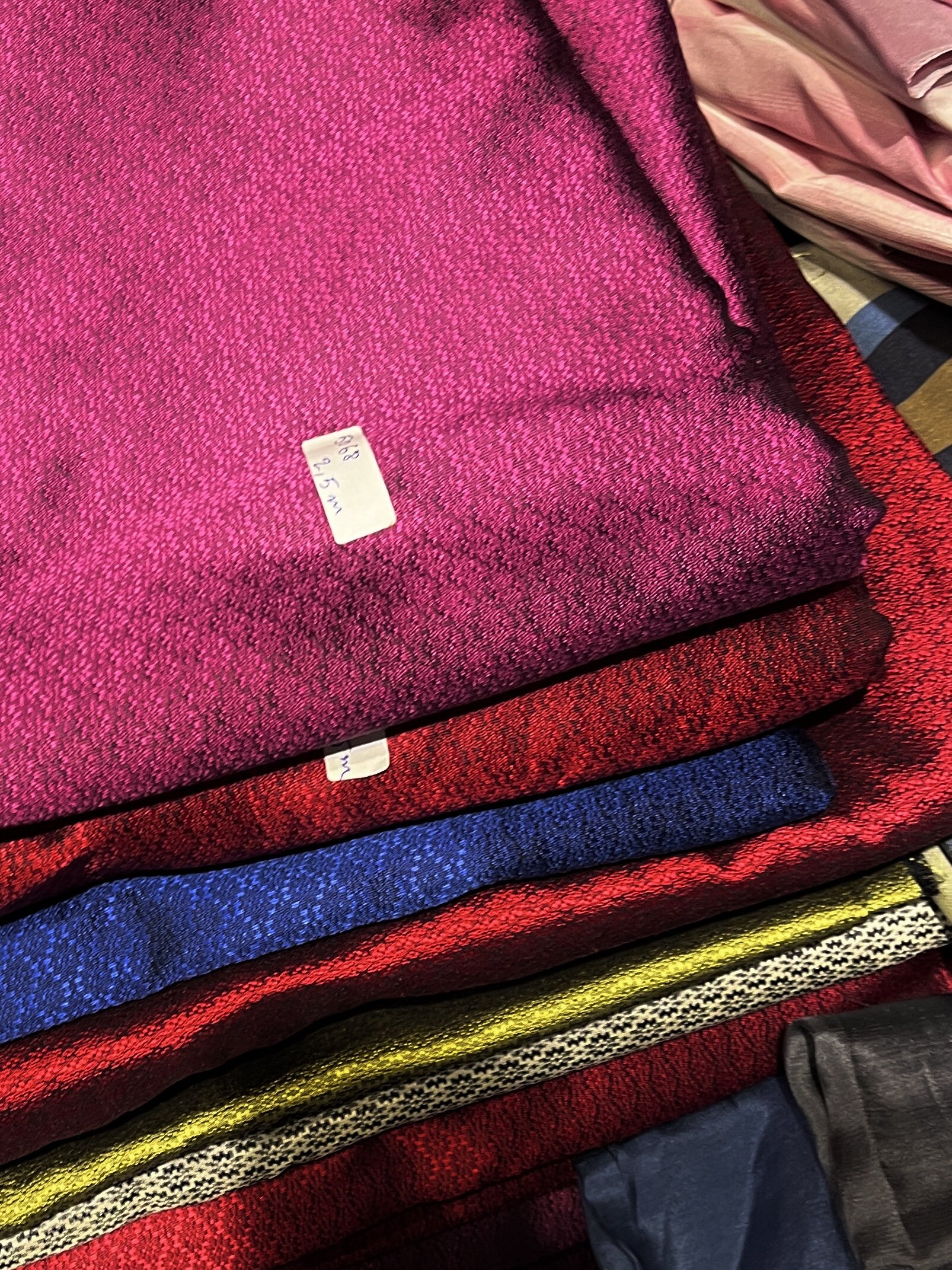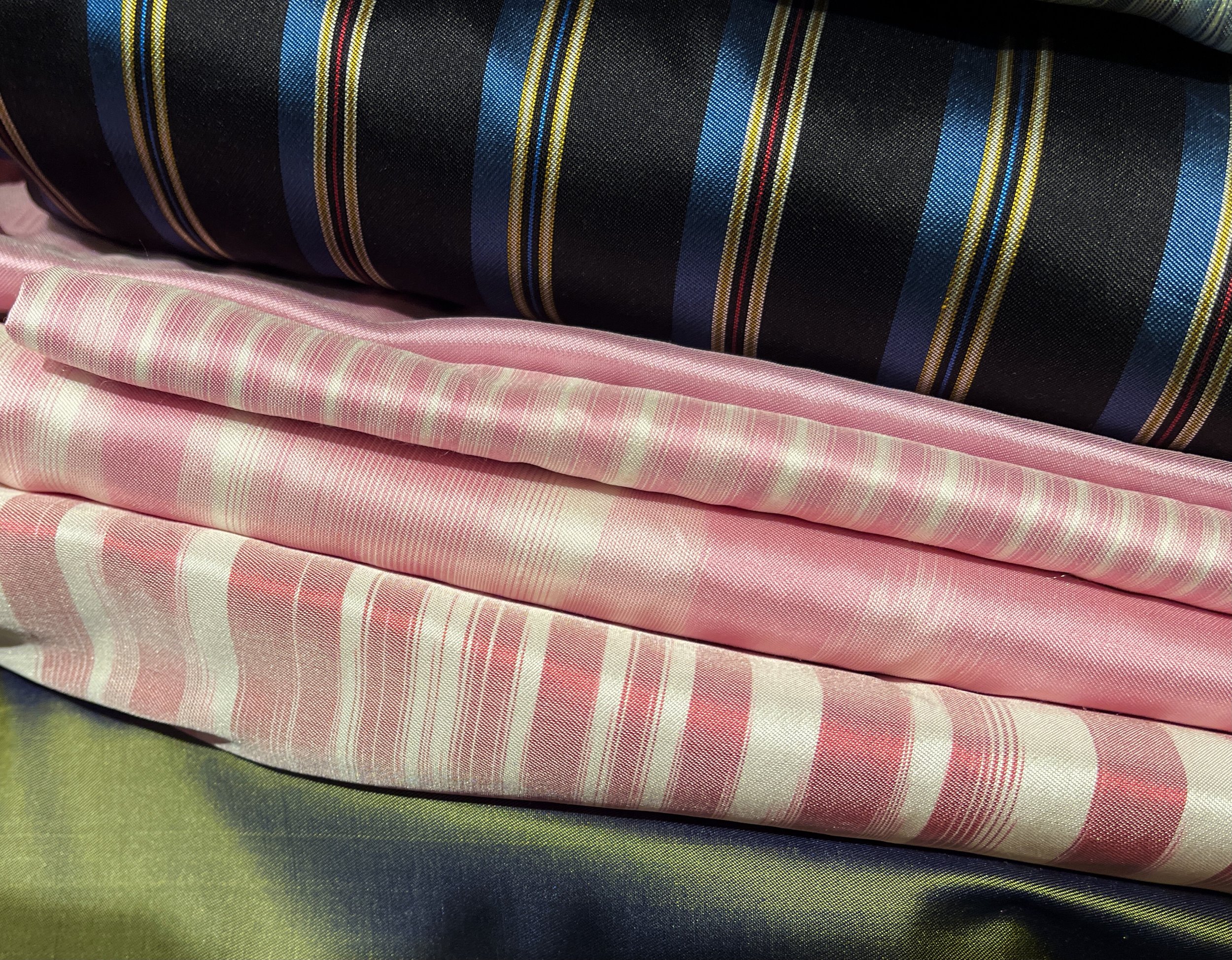In this post, I'm going to deal with the unfortunate reality of shopping in Siem Reap. In my next post, I'll cover shops of excellence, so stay tuned.
First things first, Psaar Chaa, the old French covered market. It’s Chinese trash and tourist tat on one side, a wet market on the other. On the surrounding streets are some little souvenir shops and restaurants, but nothing good or interesting or old.
Before we get to the good stuff, let me warn you about the number one shopping scam in Siem Reap: Indian immigrant boutique owners selling mass-produced Indian junk as Cambodian handiwork and antiques to tourists, at a ridiculous markup to boot. To add insult to injury, they name their stores things like 'Cambodian Cottage Industries' and 'Asian Arts Emporium' (both real places and perfect examples of this scam) to lure in naïve Westerners. They typically get your business by running a deal with tuk-tuk drivers and hotel owners; if you tell either to direct you to a silk or silver shop, they bring you to these places instead and abandon you there (typically a tuk-tuk will ask to wait for you and get the return fare, not drop and run). They get paid either by the number of tourists dropped off, or on a commission basis if you buy something. The Indian salesmen are smarmy and will tell you any lie you could dream up, 'help' you try on the merchandise, and offer dumb discounts again and again, making it not only very socially awkward but often physically difficult to leave their shops. Not only is factory fresh questionable metal actually “antique pure silver” according to these scammers, but machine embroidered polyester is “hand embroidered silk”, or even “lotus silk”, etc. I've seen scarves selling in these shops for $56 that are sold for $8 before bargaining in Ho Chi Minh City street stalls (or $1.50 each, if you're willing to order 40+ of them from AliExpress yourself). One boutique quoted me $750!! for the same super low grade semiprecious stone and likely-not-silver necklace I was quoted $140 for at the "Afghan" stall in Bangkok's Chatuchak market, and I’m sure I could have actually bought for $70 or less. These guys have the fanciest shops and speak the best English in town, and charge high prices, so perhaps some Westerners believe they have the best quality merchandise as well; they certainly do not. Indian restaurants in Siem Reap? Go for it, 100%. Indian purveyors of Cambodian goods? Run away, literally.
$1256 usd ?!?!?!
Similarly terrible experiences are the two most popular old-school souvenir shops, Sam Orn and SK Hand Made Silver, just a block away from each other on Rue Jean Commile. At least they're Cambodian owned and sell Cambodian goods, but they also have tuk-tuk driver commission deals, and come with a SERIOUS caveat: If you don't want to bargain hard for a long time and/or you won't feel OK walking away at least once, don't bother. If you're not sure you can handle it, check out the google maps reviews for the sordid tales. They survive by scamming tourists, lying about their silver quality, telling you their first outrageous price on silk is already a 40% discount, etc. They are such shameless, consistent scammers that they make themselves extremely difficult to purchase from, actually. I've walked away from fabric I genuinely wanted several times because I simply did not have the time and energy for their shenanigans; if they had been reasonable from go they could have gotten a few hundred bucks off me. You must use common sense, especially with the silverware and jewelry: they tell you the silver is 980/1000 (almost pure silver) or 925/1000 (sterling), when it's just a white base metal with silver alloy plating. The stones are cloudy, heated, and dyed, if they're real at all. The prices are ridiculous; I was quoted $1400 for a pair of "silver" and "ruby" earrings I'd never pay more than $200 for, $150 probably. Negotiate hard or don't buy at all. Same with the silk; it’s already hard to tell what’s Cambodian or just another Indian import, and they start outrageously high ($60 and $70 per meter), and it's up to you to get down to where it should be, $20 or $25 for something with a bit of embroidery, $16 or $18 for plain raw silk.
The next step up is Hup Guan Street. Also called Kandal village (though it's two blocks long if that), it was the tiny little high street in the colonial era. It's still the chicest address in this one-horse town, and boutiques like Louise Loubatières and Garden of Desire sell to trendy tourists hoping to buy nice souvenirs rather than knickknacks. Quality is acceptable (real silk, cotton, raffia, etc.) but the products are mostly Alibaba junk from China and Vietnam marketed and priced as handmade local wares. Two examples I saw at Louise Loubatières were $60 for a Chinese linen button-down shirt that's $11 on the Aliexpress app, and $12 for a Vietnamese lacquered horn bangle that's $2. The shop across the street sells private labeled $7 and $9 Chinese factory-made seagrass purses for $160+, claiming they're using traditional Cambodian basketry materials and techniques in modern designs. I guess if you literally need clothes and $250 is nothing to you, buying from these boutiques is better than supporting H&M or Shein, but it's certainly not what you’d hoped for when you arrived on Hup Guan. Hup Guan’s sole redeeming trait is a Mexican restaurant at the end of the street that sells sufficiently authentic food and great margaritas because the owner lived there awhile.
There are some similar AliExpress travesties at the Made in Cambodia outdoor market, but there are also genuine local products sold here. I feel bad for people selling authentic goods here because it's hard to separate the wheat from the chaff. Even among authentic goods, quality is take-it-or-leave-it. It's a very small market- perhaps 30 stalls, with nothing too exciting- the best of it is little notebooks with covers made of watercolors by local schoolchildren and teachers, jewelry made of nuts and seeds, local liquor and spices, and the typical ten million indigo scarves. Some sellers tag their products, others set their prices according to how rich they think you look, and they all charge in US dollars. I was quoted $60 and $90 respectively for two large necklaces made of seeds (wowzers, I know it takes time to make jewelry but you can rent an apartment within 10 minutes of Siem Reap proper for $150/month), $45 for a large handwoven undyed linen scarf, $25 for a brass nameplate necklace reading 'peace' or some such in Pali? Khmer? (presumably hand-tooled?) etc. The first two vendors when you walk in are landmine victims: a young man missing a leg, and a (supposedly) deaf woman. I think this place is the best option for reasonably priced Cambodian souvenirs, if you have a little luck and judgment. Again, there's no harm in taking a couple of photos, doing a little research on Alibaba, and coming back to purchase later.
The first place I'd even consider buying something is the Angkor National Museum gift shop. Regrettably, I don’t have pictures; they were following me rather aggressively and I felt awkward snapping without buying. As for merchandise, it’s completely mischosen. Of course there’s the standard 10,000 scarves, as if anyone needs another scarf. And who in the world is carrying home a foot-high bronze from a museum gift shop? Another thing that annoyed me immensely was their clutch bags. I was looking at them closely, hoping to buy because they seemed to be made of locally woven silk, but couldn’t because they were all wrong-sized and shapeless, barely padded envelopes with some awful fabric flower applied. Fashionable tourists don’t carry evening bags that look like lingerie bags or pillowcases with fake flowers attached. I was looking for a laptop case, an ipad case, a tissue case, packing cubes, anything remotely useful . . . nothing. Some of it is also imported nonsense meant to cater to Chinese tourists (jadeite and pearl jewelry?), which is tough because once you introduce foreign junk into the mix, how do I know I can find something locally and ethically sourced? Out of all the Southeast Asian tourist shops I’ve been in, I don’t believe I’ve ever seen evidence the merchandiser ever asked a single tourist what they wanted or needed, instead offering wares that are neither authentic to their culture nor matched to a tourist’s eye, but some terrible unsaleable compromise, and the Cambodian shops are no different. At least some of it seemed locally produced, and funds support the museum and local archaeological efforts, an undeniably good cause. What I would buy there is books! It's the only good bookshop in Siem Reap, with books on Angkor and Cambodia in English and French that just aren't available elsewhere, specialty books that are not on Amazon or in Kinokuniya etc.
The second place worth a dedicated shopping visit is Artisans Angkor. It's a standard tourist destination if you stay at one of the high-end resorts. I found their finished goods overpriced ($50 for a pair of espadrilles, $170 for a shapeless dress, etc.) but their fabric by the meter is worth looking at. They have their own silk farm; it's white silk made from originally Vietnamese worms and machine woven, so at the cheaper end of local, ethical production. Yet, the colors, weaves and patterns are distinctly Cambodian, different in style from Vietnamese, Thai and Chinese silks. Their prices by the meter are 25-50% cheaper than what you would pay in Europe or the Americas for equivalent quality fabric imported from China.
And that's where the middle market begins and ends in Siem Reap. The remaining three places worth buying from are couture fabric shops with prices at or above Hermès, literally. Check out Part 2 for details.

